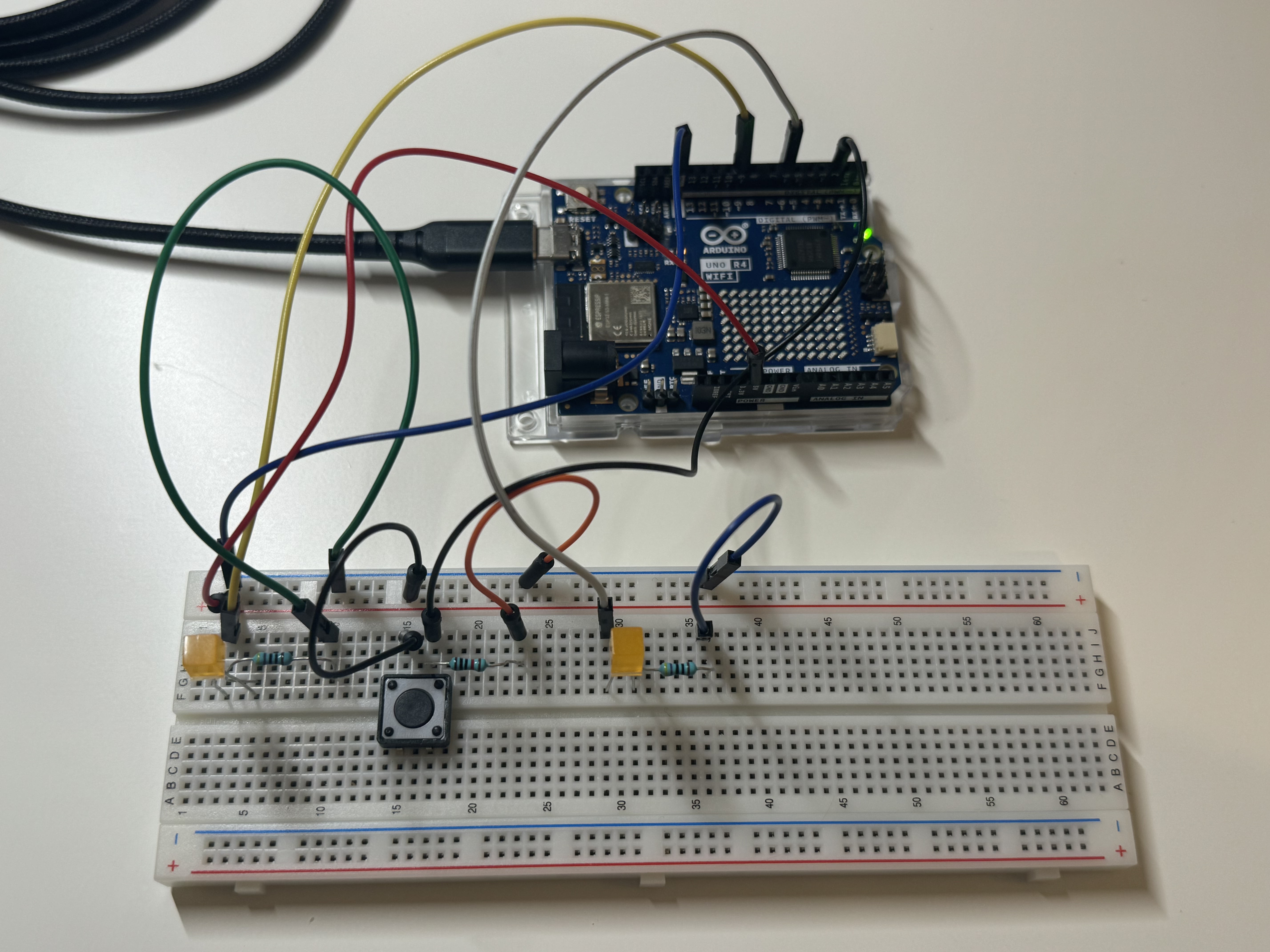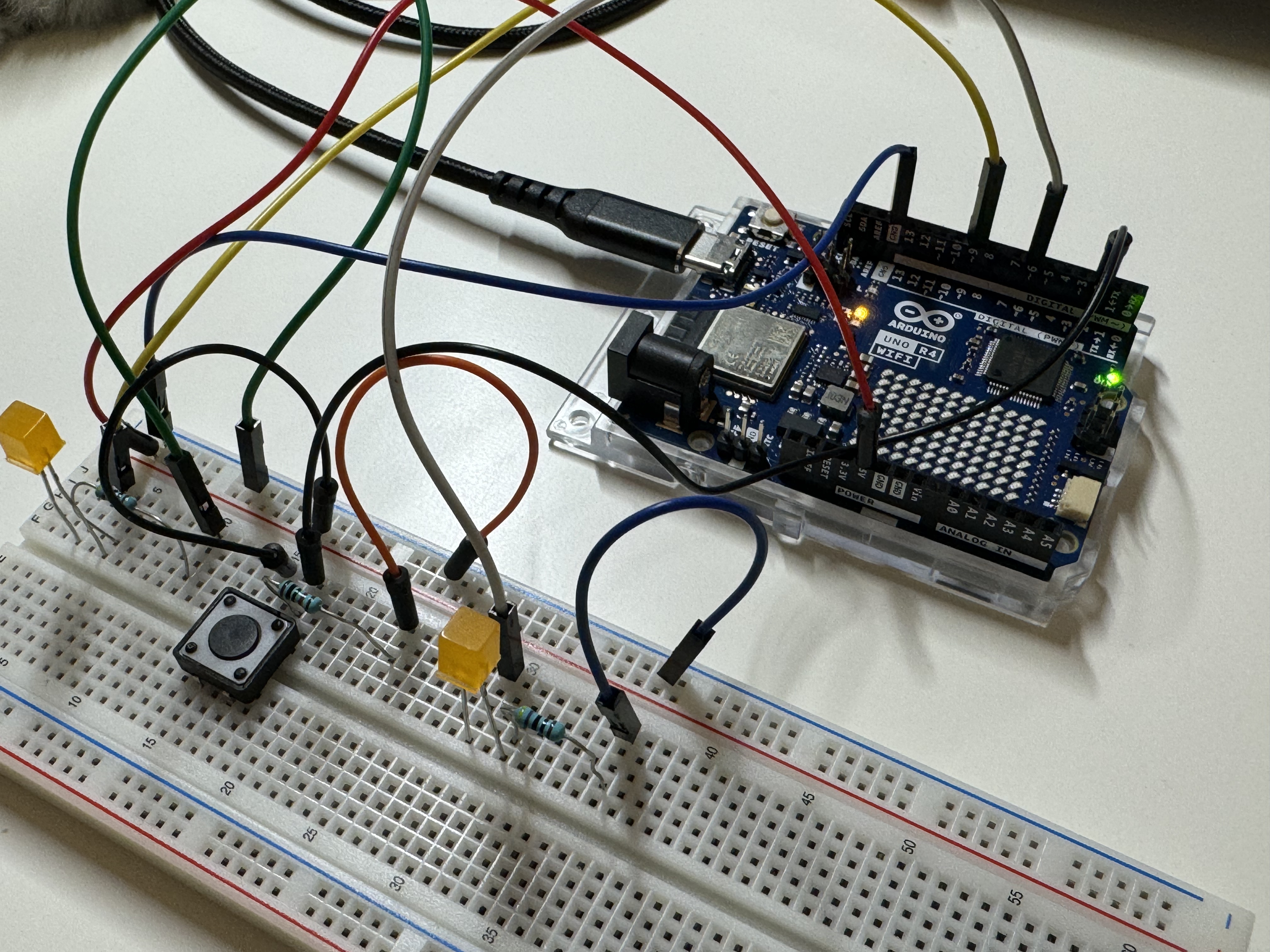

int led1=9;
int led2=6;
int btnVal=0;
int btnNewstate;
int btnLaststate=LOW;
void setup() {
pinMode(led1,OUTPUT);
pinMode(led2,OUTPUT);
pinMode(2,INPUT);
Serial.begin(9600);
}
void loop() {
btnNewstate = digitalRead(2);
Serial.println(led1,led2);
if(btnNewstate==HIGH && btnLaststate == LOW){
btnVal++;
}
btnLaststate = btnNewstate;
if(btnVal==1){
digitalWrite(9,HIGH);
}else if(btnVal==2){
digitalWrite(9,HIGH);
digitalWrite(6,HIGH);
}else if(btnVal==3){
digitalWrite(9,LOW);
digitalWrite(6,LOW);
btnVal=0;
}
delay(10);
}
Reflection:
I struggled for a long time in “button state” part. I was so confused about how to write button pressed for 3 times appropriately. And I finally found out that I can seperate two states of button and make the first begin button state as LOW. When I first pressed the button, “btnNewstate==HIGH && btnLaststate == LOW” is true, then btnVal became 1. Then the condition"btnVal==1" can be executed. This homework help me understand how Arduino’s code and circuit interact and relate well.